
Hugh Culling Eardley Childers was a British Liberal statesman of the nineteenth century. He is perhaps best known for his reform efforts at the Admiralty and the War Office. Later in his career, as Chancellor of the Exchequer, his attempt to correct a budget shortfall led to the fall of the Liberal government led by William Gladstone.

Earl Howe is a title that has been created twice in British history, for members of the Howe and Curzon-Howe family respectively. The first creation, in the Peerage of Great Britain, was in 1788 for Richard Howe, 4th Viscount Howe, but it became extinct upon his death in 1799. The second creation, in the Peerage of the United Kingdom, was in 1821 for Richard Curzon-Howe, 2nd Viscount Curzon, and it remains extant.

Sir Edward Knatchbull, 9th Baronet, was a British Tory politician. He held office under Sir Robert Peel as Paymaster of the Forces between 1834 and 1835 and as Paymaster General between 1841 and 1845.
Baron Keane, of Ghuznee in Afghanistan and of Cappoquin in the County of Waterford, was a title in the Peerage of the United Kingdom. It was created on 23 December 1839 for the military commander John Keane. He was the second son of Sir John Keane, 1st Baronet, of Cappoquin. The third Baron was a Lieutenant-General in the British Army. The title became extinct on his death in 1901.
Two baronetcies with the surname Arbuthnot have been created for members of the Arbuthnot family—both in the Baronetage of the United Kingdom, and still extant.
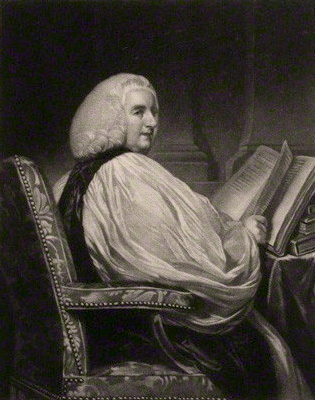
Baron Rokeby, of Armagh in the County of Armagh, was a title in the Peerage of Ireland. It was created in 1777 for The Most Rev. Dr Richard Robinson, Church of Ireland Lord Primate of All Ireland and Lord Archbishop of Armagh, with remainder to his brothers and his father's second cousin Matthew Robinson and the heirs male of their bodies. In 1785 he also succeeded his elder brother as 3rd Baronet according to a special remainder. Lord Rokeby never married and was succeeded in the barony and baronetcy according to the special remainders in the letters patent by his third cousin Matthew Robinson-Morris, the second Baron and fourth Baronet. He was the son of Matthew Robinson, son of Thomas Robinson, son of Sir Leonard Robinson, brother of William Robinson, great-grandfather of the first Robinson Baronet and the first Baron Rokeby. The second Baron was an academic, politician and eccentric. Born Matthew Robinson, he assumed by Royal licence the additional surname of Morris in 1746 on succeeding to the Mount Morris Estate in Monks Horton, Kent through his mother. He never married and was succeeded by his nephew Morris Robinson, the third Baron. He was the elder son of Morris Robinson.
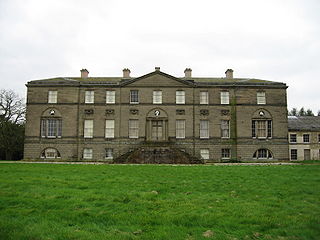
The Broughton, later Broughton-Delves, later Broughton Baronetcy, of Broughton in the County of Stafford, is a title in the Baronetage of England. It was created on 10 March 1661 for Sir Brian Broughton, of Broughton Hall, near Eccleshall, Staffordshire, High Sheriff of Staffordshire from 1660 to 1661 and the member of an ancient Staffordshire family.
Thomas Alexander Fraser, 12th Lord Lovat and 1st Baron Lovat, was a Scottish nobleman. He was the 21st Chief MacShimidh of Clan Fraser of Lovat, succeeding to the title of his distant cousin, the 11th Lord Lovat, who had been attainted and executed as a Jacobite in 1747.

Sir Edward Cust, 1st Baronet, KCH was a British soldier, politician and courtier.
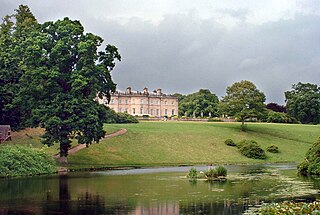
There have been four baronetcies created for persons with the surname Miller, two in the Baronetage of England, one in the Baronetage of Great Britain and one in the Baronetage of the United Kingdom. Two of the creations are extant as of 2008.

The Blunt Baronetcy, of the City of London, is a title in the Baronetage of Great Britain. It was created on 17 June 1720 for John Blunt, the famous perpetrator of the South Sea Bubble, for his good work for the nation of Great Britain. From 1703 he was the secretary of the Hollow Sword Blade Company, a joint-stock company effectively operating as a bank. He was a director of the South Sea Company from 1711. He was the main architect of the ambitious scheme for the company to assume the National Debt, and when the bribery and fraud were revealed, Parliament confiscated all his assets except £5,000, while most directors were allowed to retain £10,000.
Sir Culling Eardley Eardley, 3rd Baronet was a British Christian campaigner for religious freedom and for the Protestant cause, one of the founders of the Evangelical Alliance.
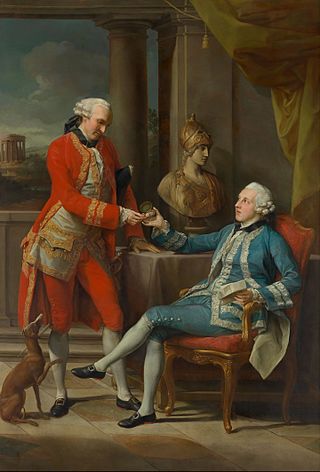
Sampson Eardley, 1st Baron Eardley, FRS was a British banker, Tory politician and peer who sat in the House of Commons from 1770 to 1802. The son of Sampson Gideon, a Jewish banker in the City of London, he was raised to the peerage of Ireland in 1789.
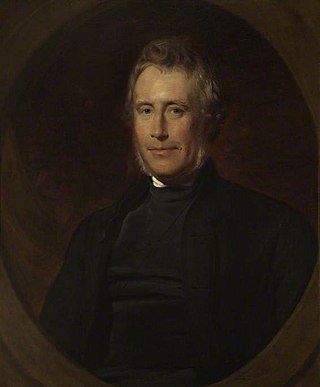
Robert John Eden, 3rd Baron Auckland, styled The Honourable Robert Eden from birth until 1849, was a British clergyman. He was Bishop of Sodor and Man from 1847 to 1854 and Bishop of Bath and Wells from 1854 to 1869.
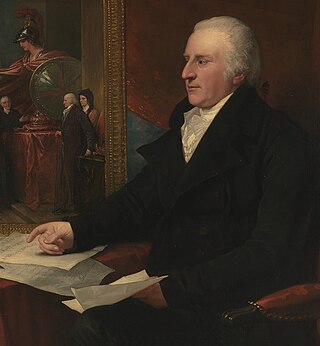
Sir John Eardley Wilmot PC SL, was an English judge, Chief Justice of the Common Pleas from 1766 to 1771.

Sir Richard Bulkeley Williams-Bulkeley, 10th Baronet was an English Whig and Liberal Party politician who sat in the House of Commons variously between 1831 and 1868.
Henry John Adeane DL was an English barrister and politician.

Sir William Earle Welby, 1st Baronet, was a British land-owner, baronet and Member of Parliament for Grantham from 1802 to 1806. He also served as High Sheriff of Lincolnshire from 1796 to 1797.
Sir John Kennaway, 1st baronet, of Escot House in the parish of Talaton in Devon, was a British soldier and diplomat.
Edward Revell Eardley-Wilmot (1814–1899) was a Church of England clergyman. He served for a time as an army officer, in the Bengal Artillery.














